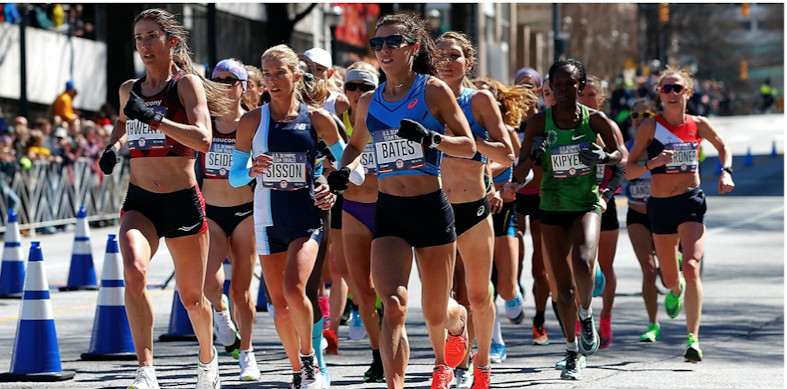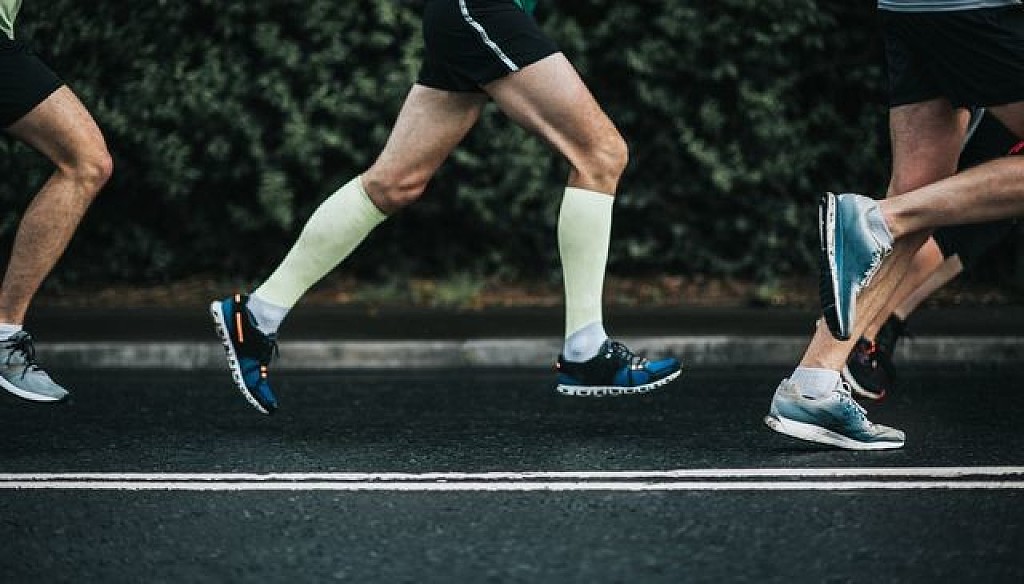Running News Daily
Running News Daily is edited by Bob Anderson. Send your news items to bob@mybestruns.com Advertising opportunities available. Train the Kenyan Way at KATA Kenya and Portugal owned and operated by Bob Anderson. Be sure to catch our movie A Long Run the movie KATA Running Camps and KATA Potato Farms - 31 now open in Kenya! https://kata.ke/
Index to Daily Posts · Sign Up For Updates · Run The World Feed
Elite Runners Spend More Time in the Air Than Even Those Who Are Highly Trained, New Research Says
What you can do to optimize your own running efficiency.
New research highlights a difference between the strides of elite runners and highly trained sub-elite runners—Elite runners stay in the air longer because they have more bounce in their stride.

To refine your own running efficiency, researchers suggest running more hills, doing more speedwork, including more plyometrics drills and strength training in your cross training, and running on diverse surfaces.
Elite runners are rightfully lauded for their speed, but their performance comes not only from forward momentum. A new study in Scientific Reports suggests they also have much more bounce than other runners, even those who are highly trained.
Researchers had 10 sub-4 minute milers and 10 highly trained non-elite participants run on a treadmill outfitted with a pressure plate under the belt, which indicated the amount of time they spent in the air compared to in contact with the ground.
They found that elite runners are in the air longer than non-elite runners, but it’s not because they’re pushing off from the ground at an angle. Instead, they bounce upward.
The study’s lead author, Geoff Burns, Ph.D., a sport science postdoctoral research fellow at the Performance Research Lab at the University of Michigan, told Runner’s World the takeaway here is that elite runners have conditioned their bodies to behave as “stiffer” mechanical systems.
“They were like pogo sticks that were slightly more upright with stiffer springs,” he said. “They had a quicker, more efficient relationship with the ground.” This is similar to how many types of animals run, he added, because it tends to require less energy.
Burns—an elite runner himself, who has represented the United States at world championships in the 50K and 100K distances—added that runners who try to emulate this stiffness in their stride consciously should approach with caution. It’s not a matter of changing your stride to get more air; the whole body needs to work together in a specific way, rather than just a few parts of it. For example, suddenly bouncing more could create more tension in your lower body muscles, and that might lead to an overuse injury.
That said, the research results can be helpful to those who want to keep refining their running efficiency.
“Do things in training that stress the system as a whole, and challenge it to rearrange its spring-like behavior,” he suggested. That includes:
Running up and down hills
Running on different surfaces
Wear different shoes to modulate body stiffness
Do sprints, intervals, or fartlek training to modify speed
Try plyometric drills, which can naturally induce stiffer behavior
Cross train with resistance training
“These are all methods that elite runners do in a regimented fashion, so incorporating some of those elements may help casual runners enhance their own relationship with the ground,” he sai
by Runner’s World
Login to leave a comment




